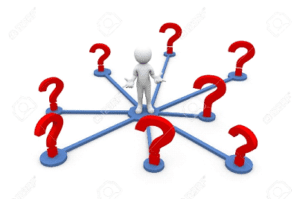The determining element in effective teams is that they are capable of coordinating activities among their members, achieving a “synchronicity” between their thoughts, activities and attitudes. And that is what we must aspire to. To the “synergy” between the members, in such a way that two plus two is more than four.
However, synergy is a result. In other words, it is the effect that we do or stop doing, rather than something we do.
To achieve positive coordination of occupations and synergy in a team, certain previous steps must be passed.To achieve this there are different models, one of them is the Foundational Model of Group Work, which institutes a hierarchy of steps or phases that sets go through on their way to synergy, these being:
RELATIONSHIP:
This is the most basic step towards teamwork. It takes people to get along, not to have big negative conflicts.
An important condition at this stage is that a true and sincere interaction is generated between the individuals, each member of the team needs to know who their partners are in the truth, what their characteristics and preferences are and that they learn to see the strengths and weaknesses of these in various situations.
In addition, each member of the team needs to know really well what their own properties and preferences are, and when these have the possibility of becoming strengths or weaknesses. That he knows what he can give the team and what are the areas where he could get some help.


POSSIBILITIES:
Once we have a stable relationship within the team, it is necessary to understand what are the ways that the other members provide.
The personal knowledge and that of the other members allows us to begin to see what are the modalities that being part of this specific team offers us. What can be achieved if I actually integrate myself into it. How can it help me to continue in my private or expert purposes. This leads us not only to know what other people’s strengths are, but also to appreciate them.


CHANCE:
Possibilities are potentialities. It is essential to understand them, but we cannot take advantage of them if they are not transformed into opportunities, in the daily work of teams and organizations, the opportunities are multiple. But they are not always recognized.
Therefore, it is necessary to generate the necessary conversations within our team so that they bring opportunities to light, that allow them to be recognized and appreciated.


ACTION:
Only when a good relationship is coupled with the vision of possibilities and the recognition of opportunities does the possibility of coordinating actions arise.
If you think about it, there is no point in trying to coordinate actions with people who do not see any possibility or opportunity at their disposal.


SYNCHRONY:
This is the most advanced step. Very few teams and organizations make it. Much less are they capable of sustaining it over time. When there is synchrony, it is not necessary to coordinate actions. Coordination is not only natural, it is the only alternative.


We can conclude that the essence of reaching synergy and taking actions to get closer to it is to be aware of the steps necessary to achieve it, which will undoubtedly help us to improve “teamwork” in our organization.
